Pilgrimage!
People of all faiths make pilgrimages - for medieval Christians, it was to Jerusalem if possible, or to Rome, but Compostela was the most popular pilgrimage site in the Middle Ages and it continues today.
We made or way to Vézelay, about an hour south of Pontigny, dodging cloudbursts but keeping dry. Vézelay was the site of a Benedictine monastery from Carolingian times (9th c.), although this church was re-dedicated to Mary Magdalen when her relics were acquired.

Jenna recounted the complicated story of Mary Magdalen and how she came to be associated with Vézelay – while standing in the nave of this impressive building, a UNESCO World Heritage property.
There is a lot of mythology about this fascinating female saint, much of it fictitious. The patriarchal society of the time could not have tolerated a woman with close ties to Jesus (she was the first to whom he appeared after the Resurrection), so her popularity came from being cast as a "loose woman". Iconography usually shows her wearing a red dress, hair uncovered, wild emotions as she weeps at the feet of Jesus in the Crucifixion.


In 1946, fourteen groups of people from allied countries across Europe were making a pilgrimage to Vézelay for world peace. Along the way they met several recently-released German POWs who asked if they could join the pilgrimage, so a 15th cross was hastily put together. There were finally some 30,000 people who took part.

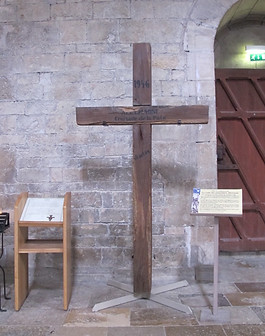
The students walked down a steep hill to the place near where St Bernard is believed to have preached the Second Crusade.
Meghan told the story of this 12th-c. saint, a pillar of the medieval church and who – despite being a cloistered monk and abbot – traveled widely throughout Europe, founding Cistercian abbeys, as well as being an advisor to kings and the pope.
The cloister has been glassed in and a monastic community – the Monks and Nuns of Jerusalem – has been living there since 1993. They use the Chapter Room (on the left) as their chapel, and provide a sacred presence in the abbey.



All that walking up and down hills means that lunch was much anticipated. Some staked out a picnic table, while others walked back (down) to the bus and brought the food up to the wooded area SE of the abbey.
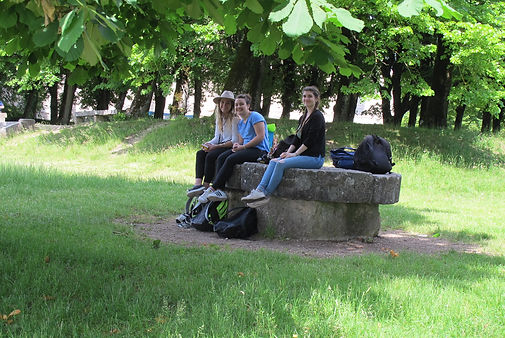
The refreshment caravan arrived at last.
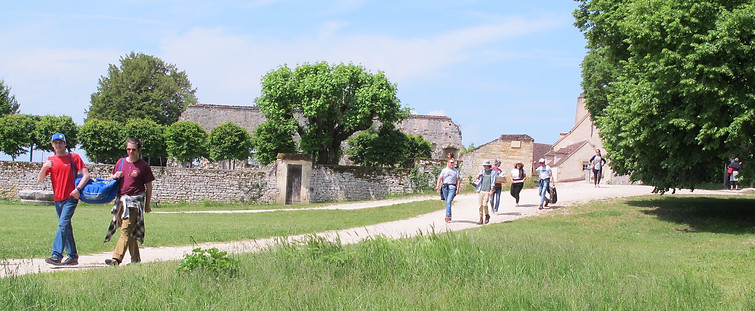


A new cheese today, from the Basque country (SW France) made of sheep milk - a real hit!


The official Vézelay picnic portrait – in arguably the most beautiful picnic spot possible – with views for dozens of km.

But you can see in the photo that clouds were coming in (in fact we dodged them all day), and we wanted to get to the bottom of the hill where the bus was waiting before the storm hit.
There's also a lot of good window-licking in this town (that's French for window shopping).
Especially as there was one more important thing to do in Vézelay.

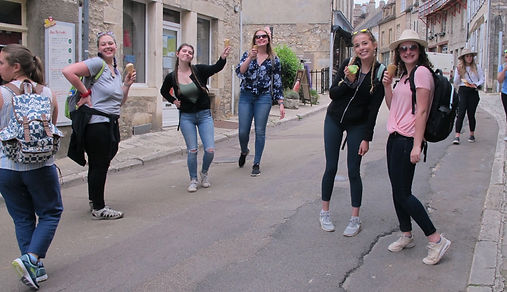
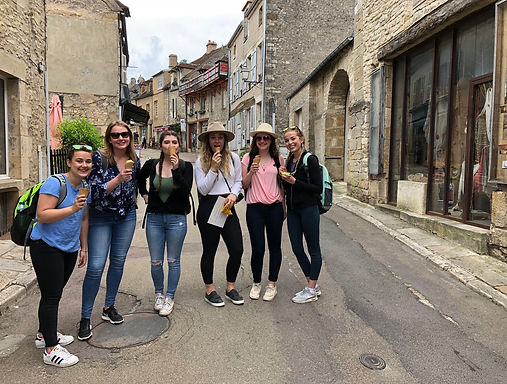


Yes, there is violet ice cream, but probably only in France...
Our second major monument today was only a few minute away, the château of Bazoches.
But first we stopped in the town of Bazoches below the château where Mercay presented St Sebastian.
He was a secret Christian in the 3rd c. and the Roman Emperor Diocletian tried to kill him by having him tied to a tree and shot with arrows. A widow found him and brought back his health, but the Roman Emperor discovered this and had him bludgeoned to death for his faith.

On the hill above the village, the 12th-c. château of Bazoches was purchased by Sébastien Le Prestre de Vauban (1633-1707), a brilliant military engineer who consolidated France's borders for King Louis XIV. He upgraded the fortifications in 300 French cities and directed the construction of some 30+ fortresses.
Vauban added a "war wing" to the old château of Bazoches, in which his descendants still live. This gave the students a chance to learn about the re-use of a medieval building, as well as details of this fascinating man.
Crusaders left from Vézelay to go south to the port of Marseille on their way to the Holy Land, and could stop at Bazoches (6 miles).


Vézelay
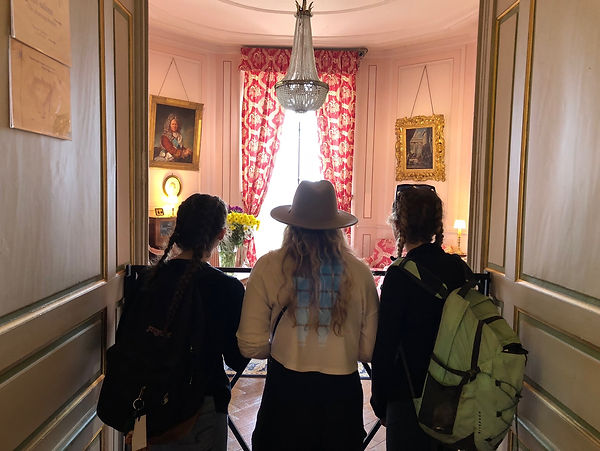
A 12th-c. fortified turret transformed into a 1930s drawing room.
Students learn about the Society of the Cincinnati, a hereditary society of descendants of French and Americans who supported the American Revolution; George Washington was their first president. The Society still exists today; their HQ is in Washington DC. The boat is a replica of one that helped the Americans win the war against the English.

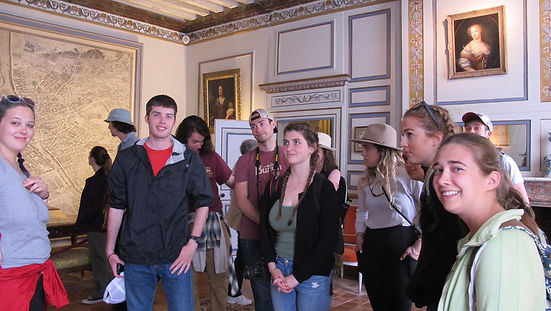


Who has seen a horse bathtub? This is an area tourists don't normally visit, with a sloping pool where the horses were groomed.
The pool is fed from a spring that comes directly from the hill above, and the water is delicious.

A view to the village below from the château.

A view to the interior of the bus, converted to a dormitory.
It didn't start to rain until we were on the road home - a miracle! Thank you for your most efficient prayers.
-
sumarcy: Gorgeous scenery! Thanks so much for the fabulous blog that keeps us all up-to-date and let's us experience some of the adventures with you!!!
-
jrjblain: way to go Jenna! Love the hat!
-
Nasca: Thank you for this daily update of photos and activities. It looks like a great learning experience! Enjoy!
-
kruegermbma: Beautiful views and amazing buildings. Although it always seems food (in this case ice cream) generates the most smiles. So glad the rain held out for you. Love the pictures.
-
clittlehale: Wooo Go Mercay! I hope the presentation went well!! Enjoy the last week of your trip! Thank you Professor Kinder for the daily updates, really enjoyable to follow along with your journey. Have fun everyone!